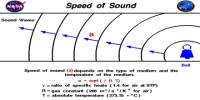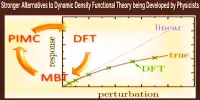With the arrival of spring comes the beginning of the baseball season and a lot of balls soaring through the air in several baseball-obsessed nations including Korea, Japan, and the United States. But it’s not just balls that can be thrown.
Scientists have now demonstrated that they can throw and catch individual atoms using light on the smallest field imaginable. Optical traps, which retain and move microscopic objects using a laser beam that is extremely focused, were employed to accomplish this astounding achievement.
While individual atoms had previously been moved using optical traps, this is the first instance in which an atom has been either released from a trap or flung before being captured by another trap.
“The freely flying atoms move from one place to the other without being held by or interacting with the optical trap,” said research team member Jaewook Ahn from the Korea Advanced Institute of Science and Technology. “In other words, the atom is thrown and caught between the two optical traps much like the ball travels between the pitcher and a catcher in a baseball game.”
The researchers describe successfully tossing cold rubidium atoms over a distance of 4.2 micrometers at a speed of up to 65 centimeters per second in Optica, a journal for high-impact research published by Optica Publishing Group. Quantum computers, which use quantum physics to solve problems beyond complicated for conventional computers, could be created using the technology.
We often encountered arrangement errors that rendered an array defective. We wanted to find an efficient way to fix a defective array without having to move a large number of atoms, because that could result in even more defects.
Jaewook Ahn
“These types of flying atoms could enable a new type of dynamic quantum computing by allowing the relative locations of qubits the quantum equivalent to binary bits to be more freely changed,” said Ahn. “It could also be used to create collisions between individual atoms, opening a new field of atom-by-atom chemistry.”
How do you catch a flying atom?
The latest work includes arranging atoms into a specific arrangement using optical traps as part of an ongoing quantum computing study.
“We often encountered arrangement errors that rendered an array defective,” said Ahn. “We wanted to find an efficient way to fix a defective array without having to move a large number of atoms, because that could result in even more defects.”
To create free-flying atoms, the researchers chilled rubidium atoms to close to 0 K (near absolute zero of temperature) and formed optical traps with an 800 nm laser.
To throw an atom, they accelerate the optical trap holding it and then turn the trap off. The atom escapes the trap as a result of this. The arriving atom is subsequently captured by another trap and slowed down until it comes to a complete stop.
The researchers carried out a series of proof-of-principle experiments to evaluate their methodology. They demonstrated the ability to throw and catch atoms as well as the fact that the atoms were unaffected by other atoms they encountered while traveling through a fixed optical trap. They also used their method to create arrays of atoms.
About 94% of the time throughout the experiments, the scientists were successful in producing free-flying atoms. To get closer to achieving 100% success, they are currently striving to perfect the technique.
















